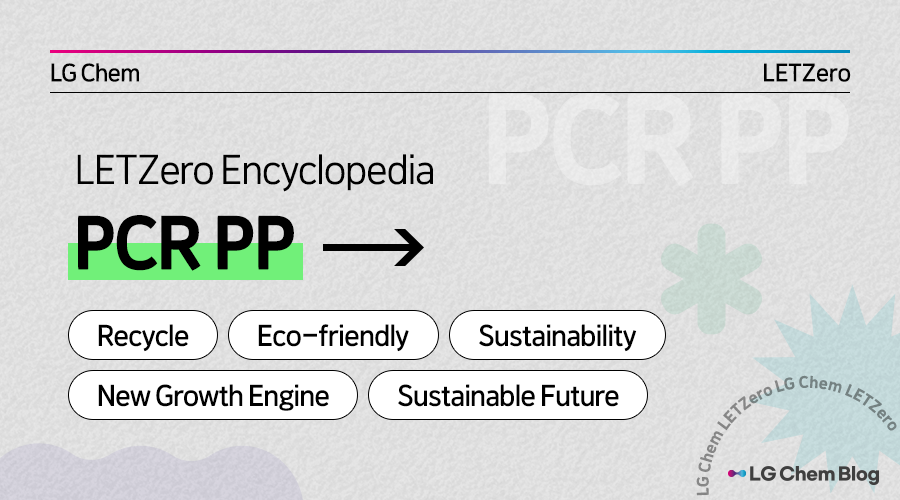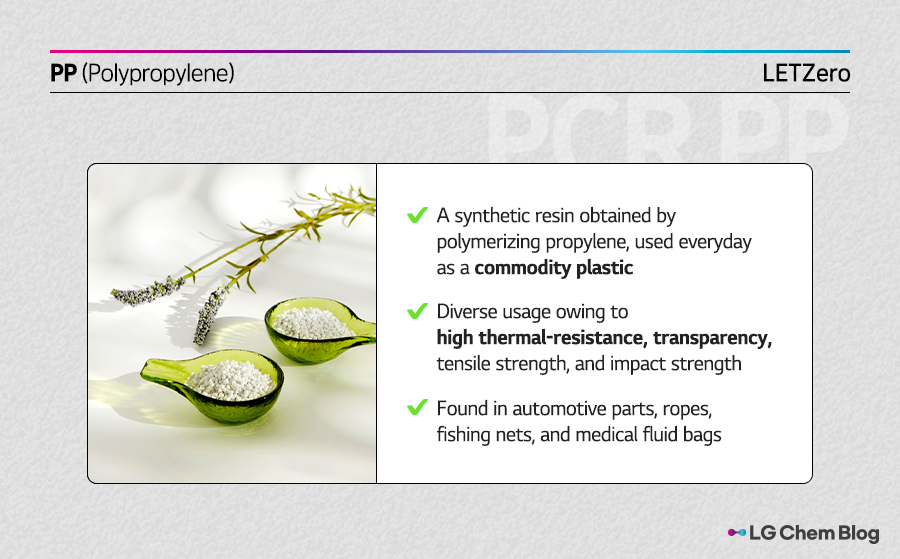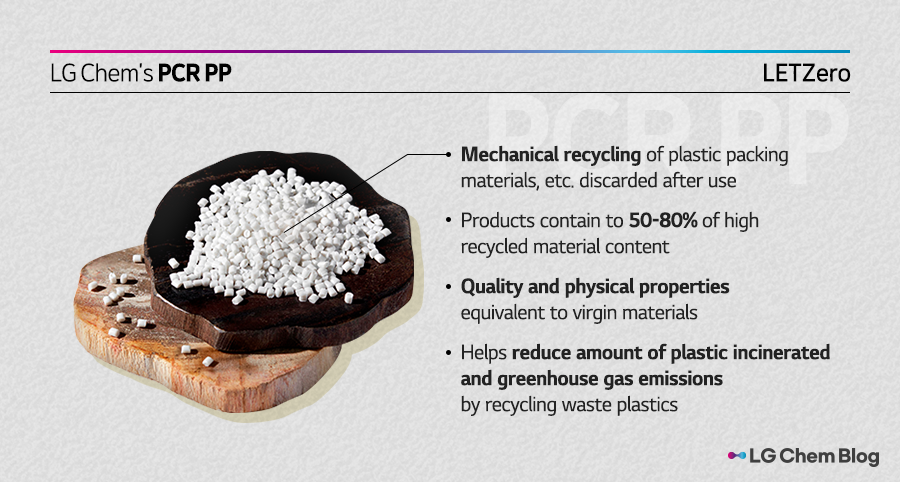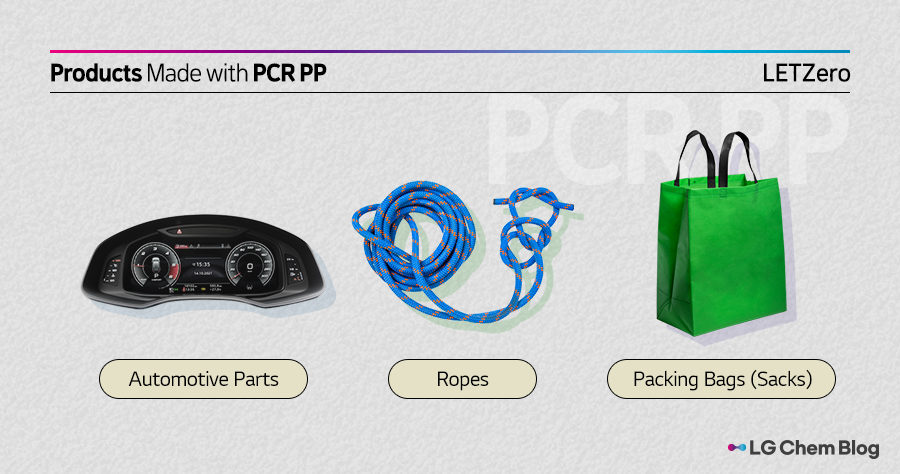LETZero Encyclopedia: PCR PP – An eco-friendly plastic revived through mechanical recycling
2023. 07. 31
2023. 07. 31

Welcome back to LETZero Encyclopedia, an introductory series to LG Chem’s eco-friendly brand LETZero and its products. In the latest episode, you took a look at PCR PC, an eco-friendly bulletproof glass based on recycled plastic raw materials. Today, you’ll turn to PCR PP, an eco-friendly plastic revived through mechanical recycling!

Before we get to PCR PP, let’s take a look at PP (Polypropylene) first. PP is a thermoplastic polymer material produced by polymerizing the propylene monomer. It is one of the commodity plastics that are popular in everyday life. Though it shows similar properties as PE (Polyethylene), PP holds a lead with superior mechanical properties, thermal-resistance, tensile strength, and impact strength, and therefore, is applied to various quarters of the industry.
If so, what is PCR PP? PCR stands for Post Consumer Recycled Polypropylene, which refers to recycling of products used and discarded by end-consumers. In short, PCR PP is a PP made through recycling of discarded plastics. The process of obtaining PCR PP is as follows. First, collect waste plastics. Second, select and separate only the PP from other types of plastics. Next comes grinding and washing the PP, which filters out the impurities that remain in waste plastics and give away a renewable plastic raw material. Last, add LG Chem’s proprietary technology of a virgin raw material to create the final version of PCR PP.
PCR PP recycles waste plastics such as packing materials to give it a new life as a raw material. It is an effective way to minimize plastic waste, and helps cut down both the amount of plastic incinerated and greenhouse gas emissions.

LG Chem’s PCR PP products contain up to 50~80% of high renewable plastic content. They feature excellent impact-resistance, high stiffness, high thermal-resistance, and high transparency. In particular, despite its high renewable raw material content, LG Chem’s PCR PP boasts physical properties equivalent to those of virgin materials. The company has already secured a lineup of diverse PCR PP products for different purposes, such as films, catapults, and more.

With physical properties equivalent to virgin materials, PCR PP can be applied to wherever the traditional PP has been used. PP, known for its high thermal-resistance and transparency, is commonly found in the cap of PET water bottles, films, fabrics, tapes, and automotive parts. Also, it takes the form of a felt to be applied to diapers, female sanitary products, air conditioner/purifier filters, masks, oil absorbents, wet towels, agricultural/civil felts, etc. Furthermore, the use of PP stretches out to various types of ropes, fishing nets, safety nets for construction sites, medical fluid bags, foam roller for workouts, tarpaulins, and sacks.
Now, you know what PCR PP is and where it is used. See you again with the next LETZero Encyclopedia on PLA!

well explained blog. Thanks for the blog